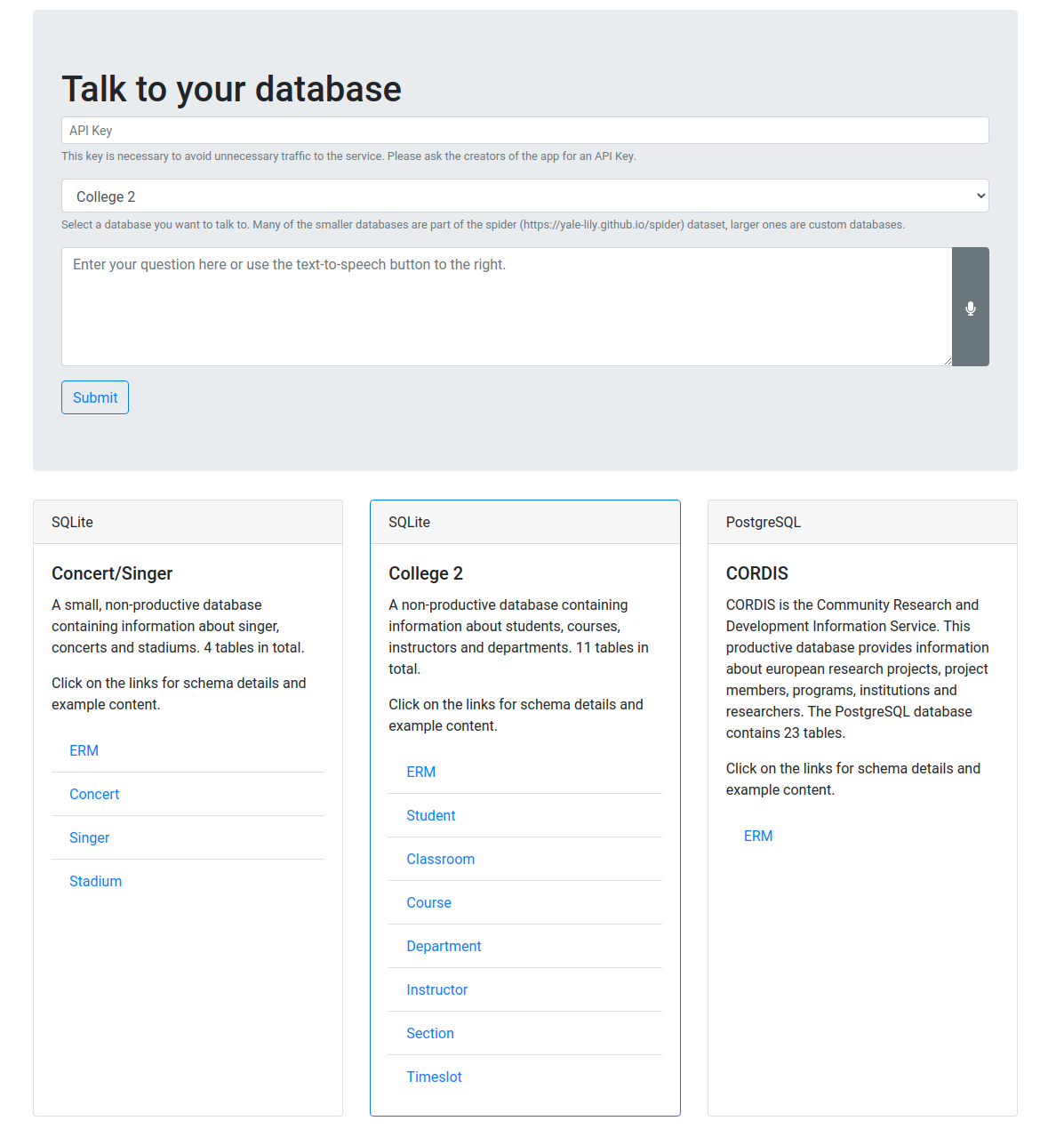ValueNet: A Natural Language-to-SQL System that Learns from Database Information
Building natural language (NL) interfaces for databases has been a long-standing challenge for several decades. The major advantage of these so-called NL-to-SQL systems is that end-users can query complex databases without the need to know SQL or the underlying database schema. Due to significant advancements in machine learning, the recent focus of research has been on neural networks to tackle this challenge on complex datasets like Spider. Several recent NL-to-SQL systems achieve promising results on this dataset. However, none of the published systems, that provide either the source code or executable binaries, extract and incorporate values from the user questions for generating SQL statements. Thus, the practical use of these systems in a real-world scenario has not been sufficiently demonstrated yet. In this paper we propose ValueNet light and ValueNet -- two end-to-end NL-to-SQL systems that incorporate values using the challenging Spider dataset. The main idea of our approach is to use not only metadata information from the underlying database but also information on the base data as input for our neural network architecture. In particular, we propose a novel architecture sketch to extract values from a user question and come up with possible value candidates which are not explicitly mentioned in the question. We then use a neural model based on an encoder-decoder architecture to synthesize the SQL query. Finally, we evaluate our model on the Spider challenge using the Execution Accuracy metric, a more difficult metric than used by most participants of the challenge. Our experimental evaluation demonstrates that ValueNet light and ValueNet reach state-of-the-art results of 67% and 62% accuracy, respectively, for translating from NL to SQL whilst incorporating values.
PDF Abstract


 WikiSQL
WikiSQL
 SPIDER
SPIDER
 Spider
Spider